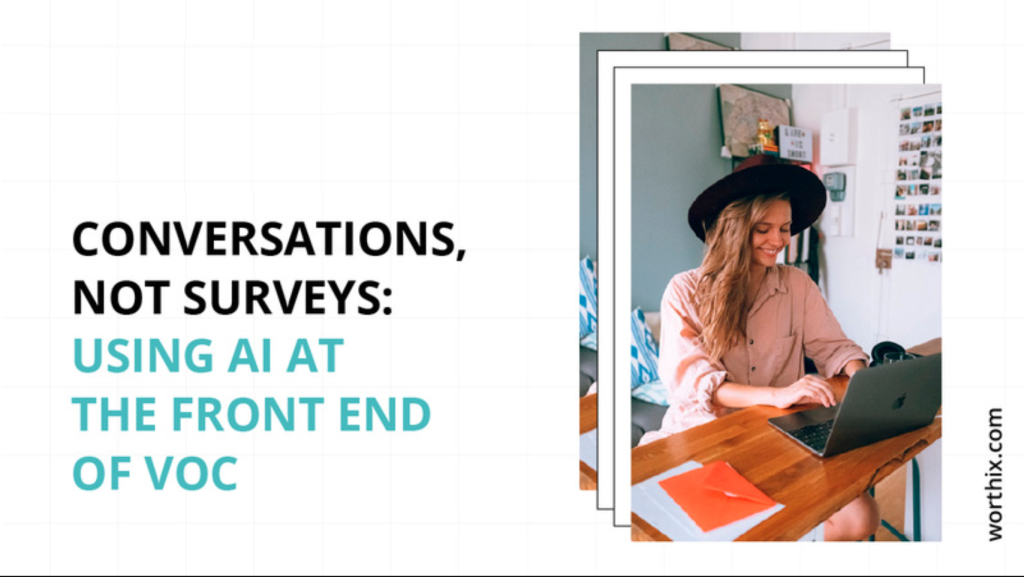Customer analytics can be a real challenge, especially since there’s a different metric for every purpose. With each unique business comes a unique set of customers and, therefore, unique measurement challenges. If someone is selling you a one-size-fits-all metric, run, do not walk in the opposite direction.

There are 5 main types of customer analytics to consider when deciding how to measure how you’re doing with customers. Each can help you make better business decisions. However, not all of them will be the right metrics for your business. You’ll have to do some experimentation of your own to figure out which serve your goals – and more importantly, your customers – the best.
Customer Analytics
- Customer Journey Analytics
- Engagement Metrics
- Loyalty and Retention
- Customer Lifetime Value
- Voice of Customer
Customer Journey Analytics
You may be familiar with a customer journey map; a visual guide laying out all the possible touchpoints a customer could have with your brand and connecting the dots to see the whole journey, telling the whole story on a whiteboard, post-its, or whatever medium you want. What matters is the process.

Customer journey analytics let you compare the theoretical, whiteboard journey map against what actually happens to customers in the real world.
Having a physical journey map as a visual aid can help you focus on one specific part of the experience that has broken down and see how it fits into the bigger customer narrative.
You can:
- Measure and improve customer experiences (CX) by monitoring and fixing individual issues in the journey
- Increase operational efficiency and save costs by optimizing and streamlining the journey
- Manage retention by identifying paths and behaviors in the journey that often lead to churn
- Understand how a customer’s separate interactions with your brand connect to each other and discover new opportunities within those connections
Engagement Metrics
Engagement metrics track how well you’re keeping customers’ attention. Pages per session, time on site, downloads, shares, conversion rates, etc., all indicate customer activity with your brand. This type of customer analysis can be found in tools like Google Analytics, as well as CRM’s like HubSpot.
You can also measure in-person engagement with a product or service, but it’s typically measured in terms of web activity, or “eyeballs”. Keep in mind, these are often called ‘vanity metrics’ for a reason. To many industries outside of ad agencies, they don’t mean a lot when it comes to financial success, so take them with a grain of salt and a dash of common sense. More traffic is not better if it’s the wrong traffic.
At a deeper level of engagement is customer segmentation. Knowing which customers engaged with what part of the site is well worth knowing. It will however get trickier, especially now that third-party tracking cookies are in the middle of being phased out.
The best benefits from engagement metrics include:
- Knowing how and when people are accessing your site
- Seeing which pages are successful at drawing traffic and which are not allows you to optimize site experience and/or searchability accordingly
- Understanding what sort of traffic you’re attracting with segmentation data, and adjusting your messaging to fit your audience/s
Loyalty and Retention
Loyalty and retention measure the customer’s willingness to repeatedly choose your brand over a competing service, and the length of time they do business with you, respectively.
With loyalty and retention analytics, you can determine which and how many of your buyers are repeat customers. You can also see the percentage of churn, and how your business compares to others like it.
The benefits of using customer loyalty and retention for customer analytics include:
- Spending less on acquiring new customers, since it’s much cheaper to keep your customers than earn new ones
- More opportunities to upsell and cross-sell, since existing customers are easier and cheaper to market to
- Marketing efforts are also more likely to succeed based on customers’ established buying habits

Customer Lifetime Value
Customer Lifetime Value (CLV) shows how much revenue you can expect from a single customer throughout your business relationship. Naturally, customer retention and loyalty metrics are both closely associated with CLV. The more loyal the customer, the higher their CLV.
The simplest version of the formula is: average order total, X number of purchases in a year, X average retention time in years.
For example, consider a customer that makes an average purchase of $200, 10 times a year. You know that you retain customers for an average of 5 years.
($200 X 10 per year) x 5 years = $10,000 expected CLV.
If your CLV score goes down, customers aren’t coming back for more. If it’s lower than acquisition spending, it’s a sign that you’re either not targeting the right customers or not budgeting wisely.
CLV’s main uses are:
- Projecting the expected future value of an acquired customer or customer segment
- Prioritizing budget based on particular customers or segments expected to provide higher returns

Voice of Customer
Voice of customer analytics (VoC) help you capture customer opinions, preferences and expectations. Much of this data is unstructured, meaning it’s not tied to a specific format. It can appear almost anywhere, including social media, open-ended surveys, online chatter, and more. This feedback shows you what your customers are thinking, whether it’s verbal, written, audio, or otherwise.
Part of the challenge is finding the format that allows customers to easily voice their feedback. Then, you have to translate that feedback into actionable insights on the receiving end. It’s what makes measuring the sum total of customer experience such a nebulous target and opens up CX initiatives to skepticism. Thankfully, modern NLP (Natural Language Processor) AI have made these insights and sentiments more quantifiable and accessible than ever.
With state-of-the-art VoC tools, it’s possible to achieve an extremely high level of qualitative feedback at a quantitative scale with minimal time and effort. Not only that, it measures the customers’ actual decision, the best way to measure ‘why’ they purchased, which is many times more valuable than what, when, how, or how often.
By paying close attention to voice of customer analytics, you’ll learn:
- The job-to-be-done they chose you to fulfill
- Why they chose your brand specifically for that job
- How you can fulfill that role better
- Interests and behavioral patterns that affect their decisions
- Which experiences have a high impact on the total customer experience
Customer Analytics are tough – but you can simplify them with Augmented VoC
As a research method, VoC has been around in one form or another since people started talking to each other. But you would think that today, we would be past rudimentary pen-and-paper surveys, right? Yet they’re still in use even in modern, enterprise-level companies. In fact, most survey platforms on the market are just pen-and-paper methodologies in digital form.
What you need is sophisticated, high-intelligence analytics without wasting months on setup and implementation. Qualitative insights at a quantitative scale are possible with VoC augmented by front-end AI. Learn more from the free webinar, Conversations, Not Surveys: Using AI at the Front End of VoC below.








